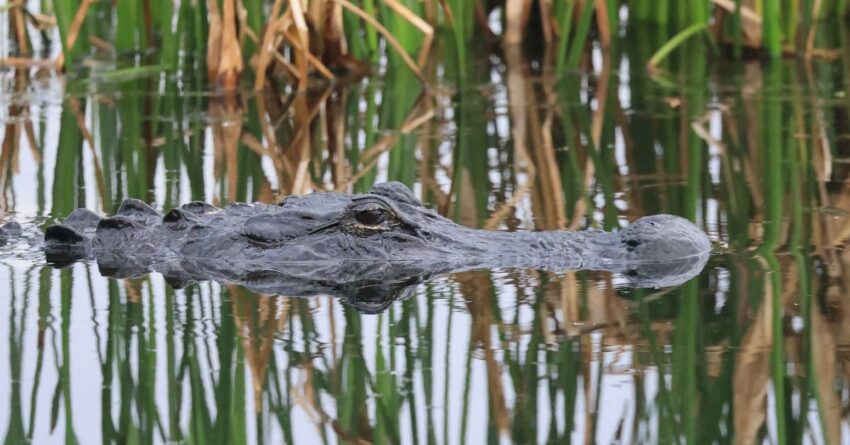Video: Alligators Frozen in Ice After U.S. Cold Snap

Parts of the U.S. kicked off 2024 with a wild wave of winter weather that continues to affect Americans up and down the East Coast. But humans aren’t the only ones who are having to deal with plunging temperatures and ice.
The Swamp Park in Ocean Isle Beach, NC is home to several rescue alligators that live in a secluded sanctuary pond. As the region continues to deal with cold temperatures, especially at night, the cold-blooded animals have had no choice but to remain in the water and be frozen in place. The park shared photos of one of these reptilian ice sculptures on Jan. 21 and spoke to their resilience. “The key to life is adaptation,” they said. “Who better to show this than the American alligator?”
In subsequent posts, the park explained what was happening and just how normal it actually is, despite how out of the ordinary it might seem. When waters begin to freeze, alligators go into what’s called a state of brumation, rather than hibernation. Here, they stick their snouts out of the water just enough so they can breathe while the rest of their body is stuck in place.
“They are in full brumation right now. Alligators do not hibernate; they brumate. And you can see they even have their eyelids closed as a means of protection,” the employee said.
Less than 24 hours later, as the weather began to warm up, the frozen gators have started to thaw out and break out of their icy prisons.
George Howard, the park’s general manager, broke down the science of brumation when their gators were similarly trapped in thick ice back in 2019.
“The water they are in does tend to freeze on consecutive sub-freezing nights. This does not happen often,” he told Live Science. “They do this as a survival technique — a coping mechanism to allow them to breathe in the event the water freezes over.”
“This time of year, they are in a process called ‘brumation,’ kind of like hibernation except they are fully aware,” he continued. “They lower their metabolism to survive the cold. They don’t eat for a few months, until the temps get up to 70 [degrees Fahrenheit] and above.”
It’s probably safe to say that alligators in the Everglades don’t have to deal with this problem.


